Best Rolex, Patek Philippe and Audemars Piguet Watches for Men and Women in NYC
(212) 730-5959 / (888) 342-9949
How to Spot a Fake Rolex
The Importance of Authenticity
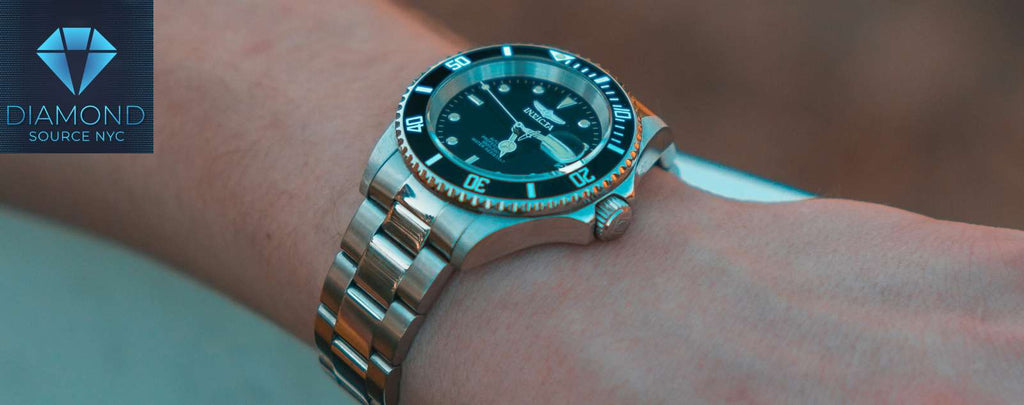
In the world of luxury watches, Rolex reigns supreme. These timepieces are renowned for their exquisite craftsmanship, cutting-edge technology, and timeless designs. However, their immense popularity also makes them a prime target for counterfeiters. The market is flooded with "fake Rolexes," "replica Rolexes," or "counterfeit Rolexes" – all aiming to deceive consumers into believing they're getting the real deal.
Purchasing a fake Rolex isn't just about getting a lesser quality watch. Counterfeiters often use cheap materials and unreliable movements, leading to malfunctioning parts and potential health risks from nickel allergies in the fake metals. Moreover, you'll be missing out on the investment value a genuine Rolex holds.
So, how can you protect yourself from falling victim to a fake? This guide will equip you with the knowledge to confidently differentiate between a genuine Rolex and a replica. By understanding the key aspects of Rolex craftsmanship, you'll be able to expose the telltale signs of a counterfeit.
Key Points to Remember:
- Rolex is a luxury brand known for exceptional quality and craftsmanship.
- The prevalence of fake Rolexes is high, posing a risk to consumers.
- Fake Rolexes often use cheap materials and unreliable movements.
- A genuine Rolex holds significant investment value.
Weight and Feel: A Genuine Rolex Packs a Punch
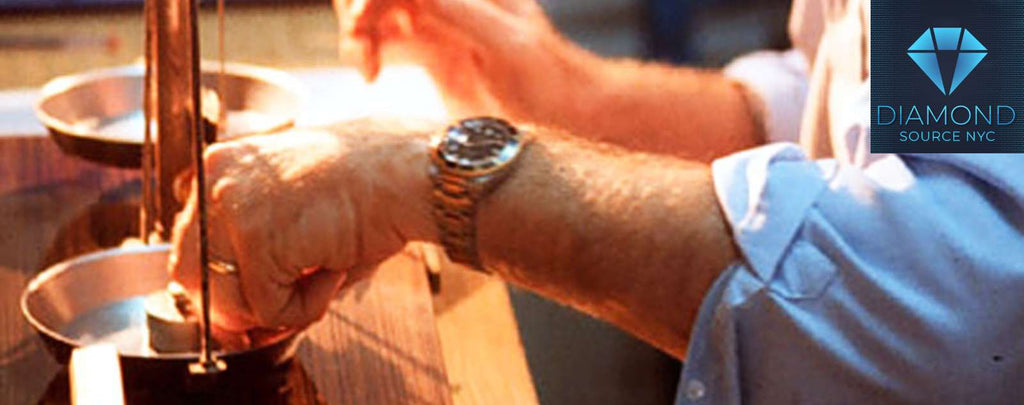
One of the first things you'll notice when handling a genuine Rolex is its weight. These timepieces are crafted from high-quality materials like 904L stainless steel, 18k gold, or platinum. This translates to a substantial heft that a fake Rolex simply can't replicate. Fakes often use cheaper metals or lighter alloys to reduce production costs. The result? A watch that feels flimsy and insubstantial compared to the solid, luxurious feel of a genuine Rolex.
Weight as a Telltale Sign:
- Genuine Rolex: Solid and weighty due to high-quality materials.
- Fake Rolex: Feels lighter and flimsier due to cheaper materials.
Beyond Weight: Inspecting the Feel
A genuine Rolex should feel smooth and well-finished throughout. Run your fingers along the case, bracelet, and clasp. There shouldn't be any sharp edges, uneven gaps, or rattles. Fake Rolexes often have imperfections in their construction, resulting in a rough texture or loose parts.
Key Points to Remember:
- Genuine Rolexes have a substantial weight due to high-quality materials.
- Fake Rolexes feel lighter and flimsier due to cheaper materials.
- A genuine Rolex should have a smooth and well-finished feel throughout.
- Fake Rolexes may have imperfections like sharp edges, uneven gaps, or rattles.
Scrutinize the Movement: Smooth Sweeping vs. Jerky Ticks
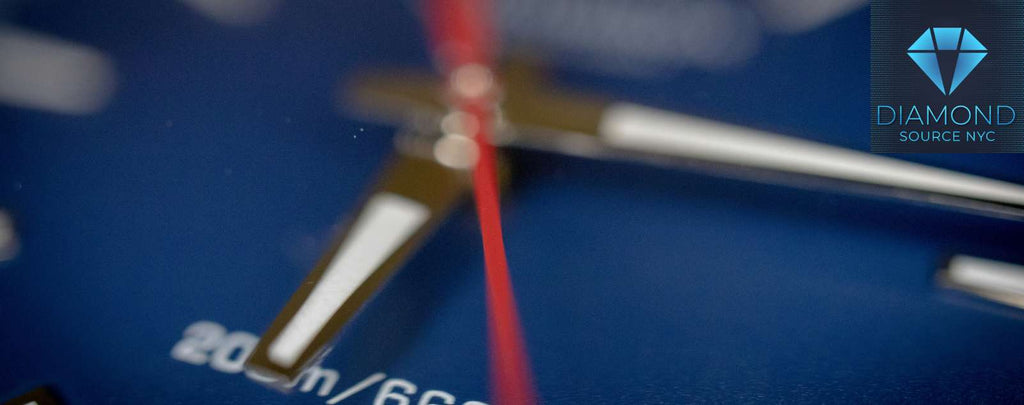
The heart of any watch is its movement. In a genuine Rolex, this intricate mechanism utilizes high-precision Swiss-made parts to ensure smooth and reliable timekeeping. One of the most telling signs of a fake Rolex lies in the movement's operation.
The Smooth Sweep of a Genuine Rolex:
A hallmark of a genuine Rolex is its sweeping second hand. The high-quality movement allows the second hand to glide seamlessly around the watch face, ticking away each second in a continuous motion. This smooth sweep is difficult for counterfeiters to replicate.
The Telltale Tick of a Fake Rolex:
Many fake Rolexes use cheap quartz movements instead of mechanical ones. These lower-quality movements often exhibit a jerky or ticking motion of the second hand. With each tick, the second hand jumps forward instead of moving smoothly. In some cases, you might even hear a faint ticking sound from the fake movement, another sign of its inferiority.
Taking a Closer Look:
While the smooth sweep is usually noticeable with the naked eye, some genuine Rolex models, like the Oysterquartz, utilize quartz movements. If you're unsure about the movement type, reputable jewelers can use professional tools to examine the watch's interior and verify its authenticity.
Key Points to Remember:
- Genuine Rolex movements are high-precision and ensure smooth timekeeping.
- The second hand of a genuine Rolex sweeps smoothly around the watch face.
- Fake Rolexes often use cheap quartz movements with a jerky second hand.
- Fake Rolexes might emit a faint ticking sound due to the inferior movement.
- Consulting a jeweler can verify the movement type for specific models.
The Devil's in the Details: Dial & Hands Scrutiny
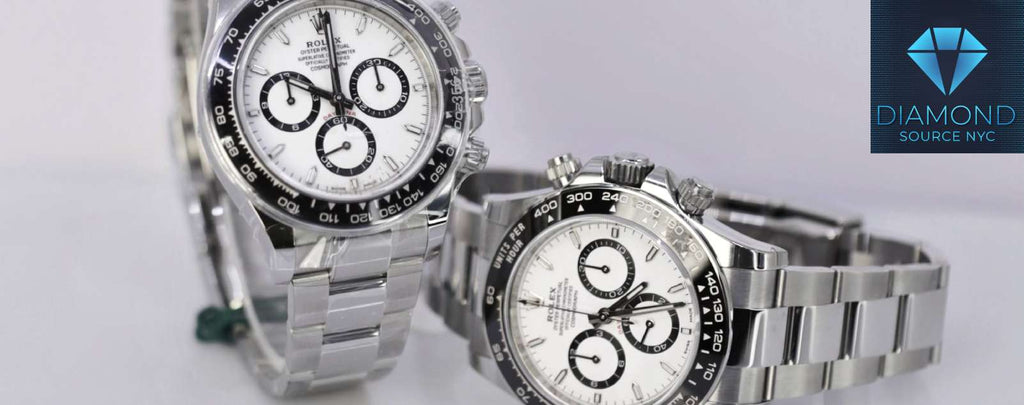
The intricate details of the dial and hands play a crucial role in differentiating a genuine Rolex from a fake. Rolex is renowned for its meticulous craftsmanship, evident in the flawless finishing and precise application of elements on the dial. Here's how to scrutinize these details to spot potential giveaways of a counterfeit.
Dial Perfection: A Mark of Authenticity
A genuine Rolex dial boasts flawless finishing. The markers, text, and logos should be uniformly applied, with crisp edges and a clean, polished look. Examine the dial closely for any imperfections like misaligned printing, blurry fonts, or uneven paint application. Fake Rolexes often exhibit these flaws due to less precise manufacturing techniques.
Hands Tell a Story: Examining Luminescence and Finish
The hands on a genuine Rolex are meticulously crafted from high-quality materials like 18k gold or white gold. They should be perfectly balanced and move smoothly across the dial. Many Rolex models feature luminous hands filled with a proprietary material called Chromalight that glows brightly in low-light conditions. Fake Rolexes may use cheaper materials for the hands, resulting in a dull finish or weak luminescence that fades quickly.
Examining the Magnifying Cyclops (if applicable)
Certain Rolex models, particularly those with date displays, feature a cyclops lens at the 3 o'clock position. This tiny magnifying bubble is made from scratch-resistant sapphire crystal and enlarges the date window for better readability. A genuine Rolex cyclops lens will magnify the date approximately 2.5 times and appear virtually flawless. Fake Rolexes may have a plastic cyclops that provides weak magnification or exhibits visible imperfections.
Key Points to Remember:
- Genuine Rolex dials showcase flawless finishing with crisp details.
- Fake Rolexes may have misaligned printing, blurry fonts, or uneven paint.
- Genuine Rolex hands are well-balanced and use high-quality materials.
- Fake Rolex hands may have a dull finish or weak luminescence.
- A genuine Rolex cyclops lens magnifies the date clearly.
- Fake Rolexes may have a plastic cyclops with weak magnification or flaws.
Crystal Clear: Examining the Glass
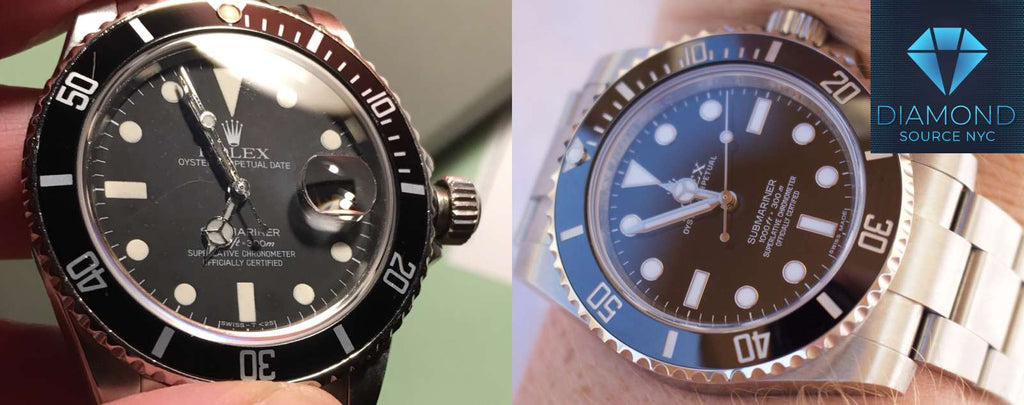
The crystal protecting the watch face is another crucial element to examine when differentiating a genuine Rolex from a counterfeit. Rolex utilizes high-quality, scratch-resistant sapphire crystal for their watches. This robust material offers exceptional clarity and durability. Let's delve into how the crystal on a genuine Rolex compares to a fake.
The Clarity of Genuine Rolex Crystal:
A genuine Rolex crystal boasts exceptional transparency. You should be able to see the dial and hands with perfect clarity, free of distortions or haziness. The crystal should also be highly resistant to scratches. Run your fingernail gently across the crystal; a genuine Rolex crystal won't show any scratches from this light contact.
The Telltale Flaws of Fake Rolex Crystals:
Fake Rolexes often use inferior quality crystals, such as acrylic or mineral glass. These materials are more prone to scratches and can appear cloudy or hazy, hindering the view of the dial. Additionally, some fake Rolexes might have visible scratches even with minimal wear, a giveaway of their lower quality.
Scrutinizing the Cyclops Lens (if applicable)
As mentioned earlier, specific Rolex models feature a cyclops lens at the 3 o'clock position to magnify the date window. In a genuine Rolex, the cyclops lens is seamlessly integrated with the sapphire crystal. It should appear virtually flawless and magnify the date precisely. Fake Rolexes may have a plastic cyclops that's poorly attached, exhibits scratches or imperfections, or offers weak magnification.
Key Points to Remember:
- Genuine Rolex crystals are made from scratch-resistant sapphire crystal.
- The crystal offers exceptional clarity and a distortion-free view of the dial.
- Fake Rolexes often use inferior crystals prone to scratches and haziness.
- A genuine Rolex crystal resists scratches from light contact with a fingernail.
- The cyclops lens on a genuine Rolex is flawless and magnifies the date clearly.
- Fake Rolexes may have a poorly attached or flawed cyclops lens with weak magnification.
A Close Look at the Bracelet: Spotting the Signs of Quality

The bracelet plays a significant role in the overall look and feel of a Rolex. Genuine Rolex bracelets are renowned for their luxurious comfort, meticulous craftsmanship, and robust construction. By examining the bracelet's details, you can uncover potential indicators of a fake Rolex.
The Hallmark of Quality: Solid Construction and High-End Materials
A genuine Rolex bracelet is crafted from high-quality materials like 904L stainless steel, 18k gold, or a combination of both. These materials ensure a solid and substantial feel. The links should be seamlessly integrated, with no loose parts or rattles when you gently tug on the bracelet. The clasp should operate smoothly and securely with a satisfying click when closed.
Fake Rolex Bracelets: A Flimsy Feel and Imperfect Details
Fake Rolexes often utilize lower-quality materials in the bracelet, such as plated metals or cheap stainless steel. This results in a lighter and flimsier feel compared to the solid weight of a genuine Rolex bracelet. The links on a fake bracelet might be poorly assembled, with visible gaps, uneven finishes, or sharp edges that can cause discomfort. The clasp may also feel flimsy and operate with difficulty.
Focusing on Specific Bracelet Types: Jubilee vs. Oyster
Rolex offers various bracelet styles, with the Oyster and Jubilee being the most popular. A genuine Rolex Jubilee bracelet features a five-piece link design for a comfortable and supple feel. The links should be smoothly polished and perfectly aligned. Fake Jubilee bracelets may have uneven links, rough finishes, or a less flexible feel. The Oyster bracelet, known for its robust three-piece link design, should offer a solid and secure fit on a genuine Rolex. Fake Oyster bracelets might feel flimsy or exhibit imperfections in the links or clasp.
Key Points to Remember:
- Genuine Rolex bracelets use high-quality materials like 904L stainless steel or 18k gold.
- The bracelet should feel solid and substantial with no loose parts or rattles.
- The clasp should operate smoothly and securely with a satisfying click.
- Fake Rolex bracelets may feel flimsy and use lower-quality materials.
- Links on a fake bracelet might have gaps, uneven finishes, or sharp edges.
- The clasp on a fake Rolex may operate with difficulty.
- Examine specific bracelet types like Jubilee and Oyster for design details.
Serial Numbers and Engravings: The Mark of Authenticity
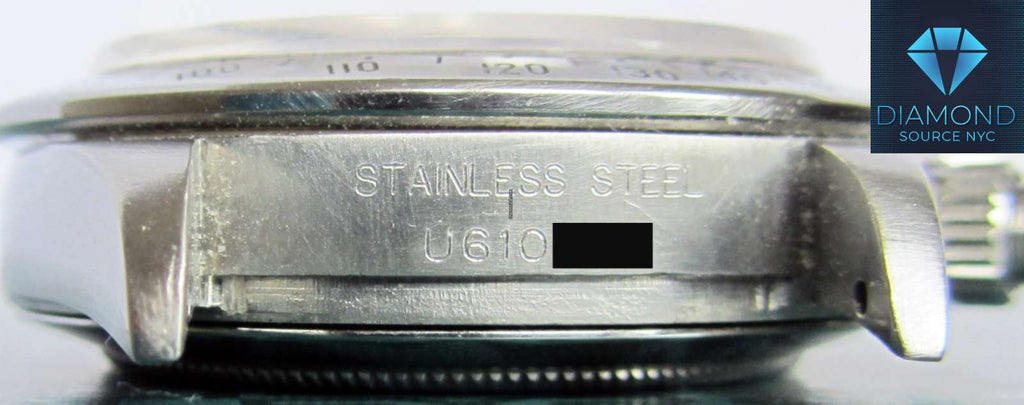
Serial numbers and engravings play a crucial role in verifying the authenticity of a Rolex. These markings are meticulously applied by Rolex and serve as a unique identifier for each timepiece. Examining these engravings closely can expose red flags on a potential fake Rolex.
The Importance of Serial Numbers:
Every genuine Rolex features a unique serial number engraved on the case between the lugs at the 6 o'clock position. This number allows Rolex to track the watch's history and verify its legitimacy. Here's how to scrutinize the serial number on a Rolex:
- Placement: The serial number should be located on the case between the lugs at 6 o'clock.
- Depth: The engraving should be deep and clear, not shallow or easily scratched.
- Font: The font used for the serial number should be consistent and match the format for the specific Rolex model and year of manufacture.
Fake Rolex Serial Numbers: A Glaring Giveaway
Counterfeiters often struggle to replicate the intricate details of genuine Rolex engravings. Here are some signs to watch out for:
- Missing or Incorrect Serial Number: A fake Rolex may lack a serial number entirely or have an incorrect or nonsensical number.
- Shallow Engraving: The serial number might be faintly etched or appear shallow and easily rubbed off.
- Inconsistent Font: The font used for the serial number may be uneven, poorly aligned, or differ from the format of a genuine Rolex for that model and year.
Beyond Serial Numbers: Examining Model Numbers and Engravings
In addition to the serial number, some Rolex models also feature engravings like the model number, reference number, and country of origin. These engravings should be clear, crisp, and consistent with the specific Rolex model. Fake Rolexes may have misspelled engravings, incorrect fonts, or poorly placed markings.
Key Points to Remember:
- Every genuine Rolex has a unique serial number engraved on the case.
- The serial number should be deep, clear, and located between the lugs at 6 o'clock.
- Fake Rolexes may have missing, incorrect, or shallow engravings.
- The font and format of the serial number should be consistent with the model and year.
- Examine additional engravings like model numbers and country of origin for consistency.
Scrutinize the Packaging & Papers: Separating Fact from Fiction

A genuine Rolex comes with a carefully crafted presentation box and a comprehensive set of documentation. These elements not only elevate the ownership experience but also serve as verification tools. Let's delve into how to scrutinize the packaging and papers of a Rolex to identify potential fakes.
The Rolex Box: A Signature Presentation
A genuine Rolex boasts a high-quality presentation box. The box should be sturdy and crafted from premium materials, often featuring a green leatherette exterior and a plush interior. Fake Rolexes may utilize flimsy cardboard boxes with cheap materials or logos that appear poorly printed or misaligned.
Examining the Rolex Warranty Card:
Every genuine Rolex comes with an official warranty card. This card should be made from high-quality paper and contain specific details about the watch, including the model number, serial number, and date of purchase. The warranty card should also feature a matching hologram or security element that can be verified with Rolex. Fake Rolexes may have missing warranty cards, poorly printed cards with typos or inconsistencies, or counterfeit holograms that don't match Rolex's security standards.
Scrutinizing Additional Documentation:
Some Rolex models may come with additional booklets or manuals. These materials should be professionally printed and contain accurate information about the specific watch model, its functions, and proper care. Fake Rolexes may lack these documents entirely or have poorly printed manuals with grammatical errors, blurry images, or information that doesn't correspond to the watch model.
When in Doubt, Seek Professional Verification:
If you're unsure about the authenticity of the packaging and papers, it's best to consult a professional watchmaker or a reputable jeweler. They can examine the materials, printing quality, and security elements to determine if the packaging and papers are genuine Rolex components.
Key Points to Remember:
- Genuine Rolexes come with a high-quality presentation box and official warranty card.
- The box should be sturdy with premium materials and a well-printed logo.
- The warranty card should be on high-quality paper with matching details and a genuine hologram.
- Additional booklets should be professionally printed with accurate information.
- Fake Rolexes may have flimsy boxes, poorly printed papers, or missing documentation.
- Consult a professional for verification if unsure about the packaging and papers.
The Price Point: Too Good to Be True?
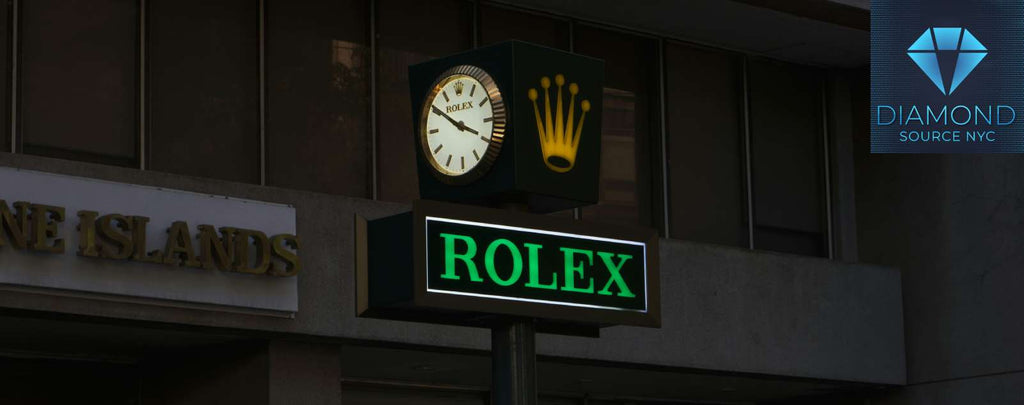
Rolex watches are luxury timepieces, and their price reflects the exceptional quality, craftsmanship, and brand heritage. Understanding the typical price range for a genuine Rolex can be a significant indicator of authenticity. Here's how the price point can shed light on whether you're looking at a real Rolex or a fake.
The Value of a Genuine Rolex:
The price of a Rolex can vary depending on the specific model, its materials (stainless steel, gold, platinum), features (chronograph, date function), and rarity. However, genuine Rolexes generally start at a certain price point that reflects their quality and brand value. If you encounter a Rolex being offered at a significantly lower price than its expected retail value or pre-owned market value, it's a strong sign that it might be a fake.
Beware of Deep Discounts:
Steep discounts on Rolexes should raise a red flag. Counterfeiters often try to lure buyers in with prices that are far too good to be true. While genuine Rolex prices might fluctuate slightly depending on the retailer or model year, drastic price reductions typically indicate a fake.
Do Your Research:
Before considering a Rolex purchase, research the typical price range for the specific model you're interested in. Utilize reputable online resources or consult authorized Rolex dealers to get a good understanding of the market value. This will equip you to identify potential fakes that are priced unrealistically low.
Remember, Value Can Increase Over Time:
Genuine Rolex watches are often considered sound investments. Their value can appreciate over time, especially for certain rare or vintage models. If you're looking for a pre-owned Rolex, keep in mind that while you might find good deals, they likely won't be drastically lower than the original retail price.
Key Points to Remember:
- Genuine Rolex prices reflect quality, craftsmanship, and brand value.
- Beware of Rolexes offered at significantly lower prices than expected retail or market value.
- Research typical price ranges for specific Rolex models before purchase.
- Consult authorized dealers or reputable online resources for accurate pricing information.
- Genuine Rolex value can appreciate over time, especially for rare models.
Final Thoughts & Where to Buy Authentic Rolexes: Invest Wisely
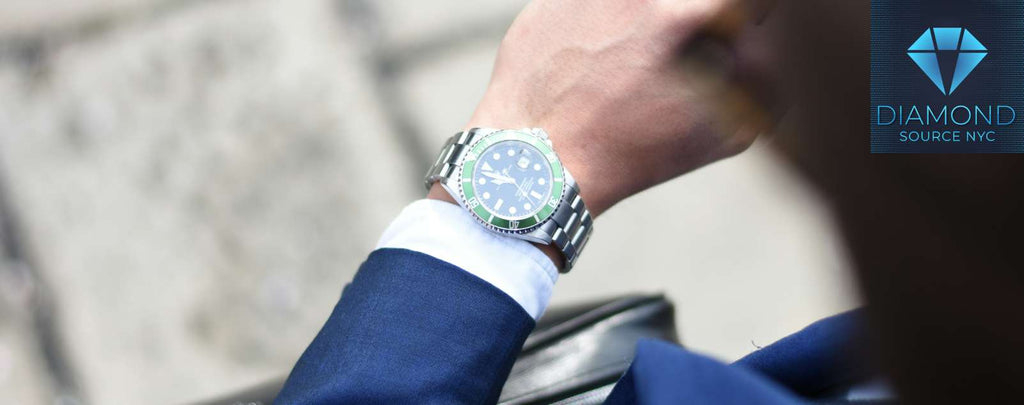
By understanding the key aspects explored in this guide, you'll be well-equipped to differentiate between a genuine Rolex and a fake. Remember, while the initial cost of a genuine Rolex might seem high, it's an investment in quality, craftsmanship, and timeless design. Here are some final thoughts to consider:
The Importance of Authenticity:
Owning a genuine Rolex is more than just having a watch. It's a statement of quality, a symbol of heritage, and a potential investment piece. Fake Rolexes simply can't replicate the experience of owning a genuine Rolex, from the exceptional craftsmanship to the peace of mind that comes with authenticity.
Where to Buy with Confidence:
If you've decided to invest in a genuine Rolex, it's crucial to choose a reputable seller. Here are some recommended options:
- Authorized Rolex Dealers: These retailers are directly partnered with Rolex and guarantee the authenticity of their timepieces. They also offer expert advice and ensure the watch comes with a valid warranty.
- Reputable Jewelers: Established jewelers with a proven track record can be a good source for pre-owned genuine Rolexes. Look for jewelers who offer authenticity guarantees and provide detailed information about the watch's history and condition.
- Online Marketplaces (with Caution): While exercising extreme caution, some online marketplaces might offer genuine pre-owned Rolexes. Always verify seller reputation, request detailed photos and documentation, and consider using a secure payment method with buyer protection.
Remember: If a deal seems too good to be true, it probably is. Don't be tempted by suspiciously low prices, as they're a strong indicator of a fake.
Invest Wisely and Enjoy for Years to Come:
Purchasing a genuine Rolex is a significant investment. By following the tips in this guide and choosing a reputable seller, you can ensure you're getting a timepiece that will not only bring you joy for years to come but potentially hold its value or even appreciate over time.
Key Points to Remember:
- Owning a genuine Rolex is an investment in quality, craftsmanship, and design.
- Purchase from reputable sources like authorized dealers or established jewelers.
- Exercise extreme caution when considering online marketplaces for pre-owned Rolexes.
- Don't be swayed by suspiciously low prices, a red flag for fakes.
- A genuine Rolex is an investment that can bring lasting enjoyment and potential value appreciation.
